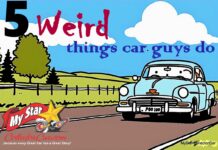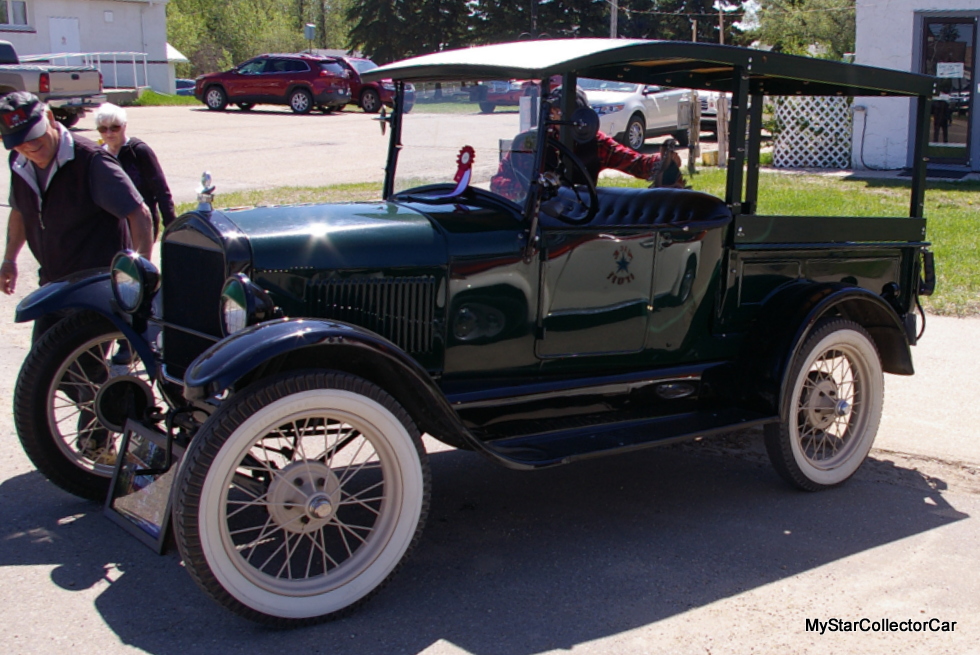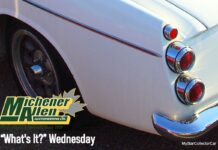Early hot rodders faced resistance because they carved up cars and reshaped them into something that (in their opinion) was better.
Few could argue against the better part because cars from the 1920s and 1930s were fairly primitive machines so upgrades like better brakes and more power made sense.
The case for carving up fifties cars is far less obvious.
The biggest reason for carving up early iron is found in highway history because a paved road in the 1920s and 30s was a rare sight. Most roads were two sketchy narrow lanes of high adventure, dirt and mud so a Model T or Model A made sense because speed and handling weren’t issues—ground clearance was the biggest hurdle.
The 1950s changed the game because superhighways, turnpikes and interstates became part of the American fabric so Detroit designed cars for 75 miles per hour—not 25 miles per hour.
These mid to late 50s rides were long and wide and they could handle road trips with ease so they offered a far different driving experience than an excursion in a ’26 Model T. They were like 4-wheeled sofas and they could turn a cross country road trip into a light workout.
You could successfully argue that virtually every refinement a hot-rodder made to a ’28 Chev was a technical improvement over the factory version but the case is weaker with 50s cars. For example, a 1958 Plymouth is a tweak or two away from being a legitimate road warrior—even in 2019.
You can add disc brakes all around, fuel injection and upgraded steering and that 61-year-old Plymouth will run with Subarus and Hondas all day on any road you can name.
The leap from 20s to 50s automotive technology is like the leap from the Space Shuttle Discovery to the Star Ship Enterprise so an aspiring hot-rodder’s game plan for a ’57 Chevy is far less complicated. In fact, you can turn one into a street monster right out of a catalog—if you want a monster. If you don’t want a monster you can do some mild upgrades and still run with the Subarus and Hondas.
The biggest difference between 20s or 30s iron and 50s iron is simple—you can still run stock 50s iron on any highway in 2019. A large and in charge ‘59 Olds will run all day at 75 miles per hour in factory form but you have to drive it with the knowledge that it won’t stop or handle like your brand new Buick Enclave. The guy who cuts you off at 80 miles per hour probably doesn’t realize that either so it will definitely add to the adventure but you’ll be a better driver for the experience—or ambulance bound.
Nevertheless, mid-late 50s cars were built for the highway so they can legally (and technically) run on the freeway while very few 1920s cars can even hit minimum exit speeds. That’s why hot-rodders upped their game.
You don’t need to gut a 50s car the same way because they were already born to run in the turnpike era.
By: Jerry Sutherland
Jerry Sutherland is a veteran automotive writer with a primary focus on the collector car hobby. His work has been published in many outlets and publications, including the National Post, Calgary Herald, Edmonton Journal, Ottawa Citizen, Montreal Gazette, Saskatoon StarPhoenix, Regina Leader-Post, Vancouver Sun and The Truth About Cars. He is also a regular contributor to Auto Roundup Publications.
- CLICK HERE TO SIGN UP FOR THE NEWSLETTER
- CLICK HERE to Like us on Facebook
- CLICK HERE to Follow us on Twitter
- CLICK HERE to Follow us on Pinterest
Please re-post this if you like this article.

































































